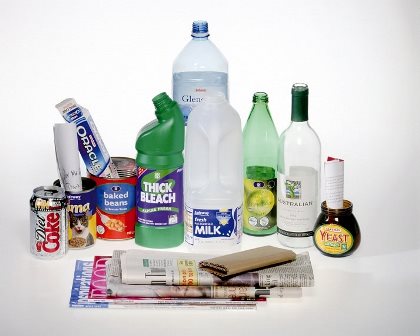Uncertainly surrounds provisional packaging data for the first quarter of 2021, published last week on the National Packaging Waste Database (NPWD).
Compliance schemes have sounded a note of caution as the figures are believed to contain inaccurate data for plastic packaging.

Compliance schemes have sounded a note of caution as the Q1 2021 figures are believed to contain inaccurate data for plastic packaging
Released on Friday (April 23), the provisional data covers the period between January and March 2021 and shows the amount of packaging recycled in tonnes under the UK’s packaging waste recovery note (PRN) system.
Net figures for some plastic packaging grades exceeded gross figures, which should be impossible. Net totals deduct non-target materials included in gross totals.
The gross total for other plastic packaging accepted for reprocessing currently stands at 30,751 tonnes, whereas the net total is 72,224 tonnes. This means there is a discrepancy of more than 40,000 tonnes of plastic packaging. There are also thought to be issues with the totals for packaging film.
The difference is believed to be down to an administrative error rather than foul play.
The Environment Agency is said to be aware of the discrepancies and looking to resolve the problems. On Friday (23 April) the regulator issued a warning to the packaging sector that it could cancel ‘incorrect’ PRNs (see letsrecycle.com story).
Materials
The uncertainty mars what looks like an otherwise good performance across the board, with greater tonnages of every material bar glass re-melt accepted or exported for recycling when compared to the same period last year (see letsrecycle.com story).

Figures for the first quarter of 2021 from the NPWD database as of 27 April. The plastic data is known to have issues
Tom Rickerby, head of trading at PRN trading platform The Environment Exchange, said: “General market sentiment suggests a difficult start to the year for the recycling sector. Lockdown has continued to disrupt supply and demand for secondary commodities both in domestic and international markets, whilst waste exports have been hampered by Brexit, regulatory change and restrictions and ongoing challenges in shipping.
“However, the release of the Q1 PRN data suggests it’s not all doom and gloom, with strong supply across the majority of materials giving cause for optimism, despite demand, which could be significantly impacted by Covid, not being released until 14 May.”
Nearly 986,000 tonnes of paper was recycled in Q1, up 10% on last year. Mr Rickerby said buoyant recovered paper prices underpinned by strong UK and European demand had resulted in another strong quarter.
While glass re-melt tonnages are down by 9%, glass other tonnages are up by 37%. One compliance specialist said the reduction in glass tonnages could be down to the closure of the hospitality sector throughout the lockdown.
Another standout figure shows 41,898 tonnes of aluminium packaging was sent for recycling, up by 16% from 36,151 tonnes in 2020. This was put down to an increase in accredited reprocessors.
Target tonnages for recycling in 2021 are set to be published in May.
‘Good progress’
David Daw, project analyst at Valpak, said the compliance scheme welcomed the publication of the unverified Q1 reprocessing figures, which taken together with the carry-in figures from 2020 showed the UK was making “good progress” towards achieving this year’s targets for all materials.
“It is particularly good to see the increase in UK reprocessing taking place compared to the same quarter last year”
“It is particularly good to see the increase in UK reprocessing taking place compared to the same quarter last year, particularly for plastic. This follows on from some significant investments in capacity. Hopefully this trend will continue for the rest of the year. It is also likely that any growth in demand as a result of higher recycling targets will be counterbalanced by the impact of the Covid lockdowns for many sectors such as hospitality over the last year, as forecast in the Packflow Covid-19 report released last year.
“The new export rules for plastic and Brexit paperwork issues also only seem to have had limited impact on export markets so far. We will though continue to monitor the situation. It is important that reprocessors continue to get accredited as well. Currently there are around 60 fewer reprocessor/exporter accreditations than last year, excluding those for energy from waste which are no longer applicable.
“We are aware there is currently a problem with the plastic data reporting categories on the report which hopefully will be resolved over next week or so before the verified data is released in May.”
Pandemic
Paul Van Danzig, policy director at Wastepack, told letsrecycle.com the figures showed the PRN system was robust enough to deliver even at times of national crisis.
He said: “Most materials are performing as expected and haven’t been dramatically affected by the pandemic, which is really encouraging. Glass re-melt is down, which you would expect with the closure of the hospitality sector.
“The stand-out figure is still for plastic. Despite the issues with the data, the plastic recycling sector has performed well. The broader picture will be clearer once the UK obligation is published next month, but it looks like it is on track to meet the targets.
“What is also very interesting is that the gap between plastic exported for recycling versus plastic domestically reprocessed continues to narrow. Though plastic exported is still higher than plastic reprocessed in the UK, the gap is significantly closer than it was this time last year. This is good news for domestic reprocessors and is what a lot of stakeholders have wanted for many years.”
The post Uncertainty surrounds Q1 plastic packaging data appeared first on letsrecycle.com.
Source: letsrecycle.com Plastic




